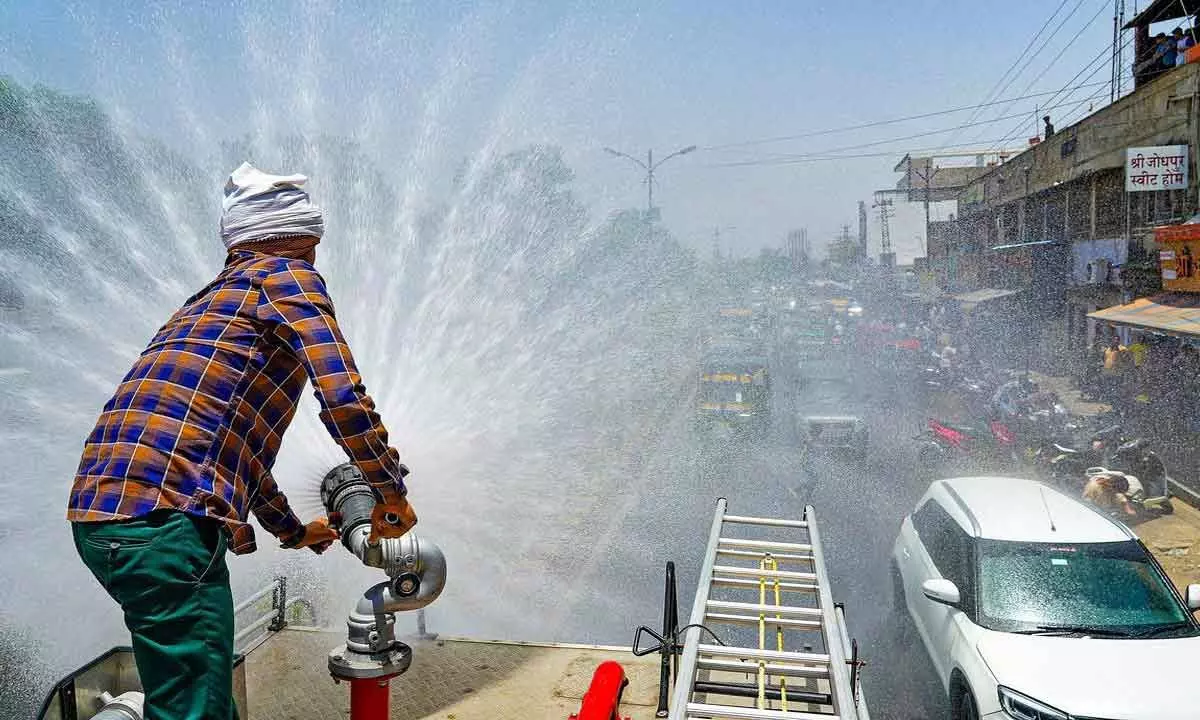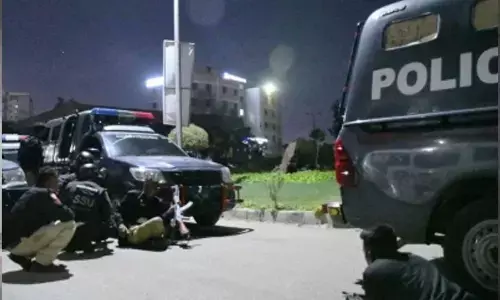Dangerous trends in India’s biggest cities

n CSE tracks heat in six megacities – Bengaluru, Chennai, Delhi, Hyderabad, Kolkata and Mumbai. Identifies trends as India reels under an unprecedented heat wave n Increasing relative humidity across all climate zones has worsened the heat index (combination of air temperature and relative humidity) and heat stress in every city n Cities are no longer cooling down at night n Need urgent heat management action plans to expand green areas and waterbodies, reduce thermal load on buildings and improve thermal comfort, and implement emergency measures during heat wave episodes to protect public health
Average relative humidity (RH) has significantly increased in the last 10 summers compared to the 2001-10 average. Barring Bengaluru, decadal summer-time average RH has increased by 5-10 per cent in the other five mega cities. The last 10 summers of Hyderabad have been on an average 10 per cent more humid compared to 2001-10
New Delhi: An unprecedented heat wave has been enveloping Indian cities, worsening the urban heat island effect, this summer. A new analysis by Centre for Science and Environment (CSE) says there are far deeper and longer term evidences on the nature of this changing trend that is impacting India’s biggest cities.
Even if there is a variation in air temperatures across climatic zones with some parts recording even a decline, the other two factors – relative humidity and land surface temperature -- combine to enhance discomfort and heat-related disease burden. According to the US National Weather Service, the heat index is a measure of how hot it really feels when humidity is factored in with the actual temperature. It is considered that a heat index of 41°C is dangerous for human health.
“Assessing the changing trend in heat, relative humidity and land surface temperature along with day and night time temperatures is necessary to develop a comprehensive heat management plan for the urban centres,” says Anumita Roychowdhury, executive director, research and advocacy at CSE. “The evaporation of sweat from skin cools our bodies, but higher humidity levels limit this natural cooling. As a result, people can suffer heat stress and illness, and the consequences can even be fatal even at much lower ambient temperatures. Interestingly, night time temperature is remaining elevated in cities,” says Avikal Somvanshi, senior programme manager, Urban Lab, CSE.
Ambient air in Mumbai, Kolkata, Bengaluru and Chennai has gotten hotter while Delhi and Hyderabad seem to be bucking the trend. Decadal summer-time average ambient temperature has risen by about 0.5°C in Mumbai, Bengaluru and Chennai compared to 2001-10. Kolkata’s decadal average is also up by 0.2°C. Delhi and Hyderabad, two metros which are located in composite climate zones known for the driest and harshest summers, have registered lower decadal average compared to 2001-10. Decadal summer-time average for Delhi is down by 0.6°C and for Hyderabad, by 0.9°C, compared to 2001-10.
Relative humidity has increased in all zones: This increase has made heat stress worse in warm-humid and moderate climate zones, while it has nullified the fall in air temperatures in composite and hot-dry climate zones, especially during monsoons.
Average relative humidity (RH) has significantly increased in the last 10 summers compared to the 2001-10 average. Barring Bengaluru, decadal summer-time average RH has increased by 5-10 per cent in the other five mega cities. The last 10 summers of Hyderabad have been on an average 10 per cent more humid compared to 2001-10. Similarly, Delhi’s last 10 summers have been 8 per cent more humid. Mumbai’s relative humidity is up by 7 per cent, while summers in Kolkata and Chennai are 5 per cent more humid on an average. Bengaluru has seen no change in humidity levels during summers.
Both Delhi and Hyderabad might have registered the biggest rise in RH levels, though they are located in one of the driest climatic zones. This jump in decadal RH still does not bring their overall humidity levels at par with that of other mega cities which are located in more humid climates. Mumbai, Kolkata and Chennai are still over 25 per cent more humid than Delhi and Hyderabad. The increased humidity in Delhi and Hyderabad somewhat nullifies their marginal drop in ambient air temperatures; in the other four cities, it intensifies the heat stress.
Heat index is rising faster than ambient temperature in all the cities. Delhi’s summer HI average stood at 32.2°C (impact of humidity: 3.3°C) and Hyderabad’s at 29.3°C (impact of humidity: 1.2°C). Bengaluru was the least hot among the mega cities with a summer HI average of 26.9°C (impact of humidity: 0.8°C).
Cities not cooling down at night at the rate they used to during 2001-10: This phenomena is observed across all climatic zones. Hyderabad used to cool down at night the most, while Kolkata the least. Now, in the last 10 summers (2014-23), night-time cooling has reduced to 6.2°C-11.5°C. In the current decade, Hyderabad on an average is relatively cooler by just 11.5°C -- 13 per cent down from 2001-10 levels. All cities have registered significant increase in their built-up area that contribute to urban heat island effect.
Hyderabad scenario:
• Relative humidity has increased by 10 per cent between 2001-10 and 2014-23.
• High humidity responsible for adding an average 1.5°C of heat stress
• High number of summer days with high temperatures: Hyderabad has 30-90 days in summer when the daily ambient temperature exceeded the 37°C mark.
• Not cooling down at night at the same rate as in 2001-10: The diurnal cooling down of land surface temperatures between day- and night-time is down by 13 per cent.
• Urban heat island phenomena stronger at night: During day-time in summers,the core of the city is 0.7°C cooler than its peripheries and peri-urban areas. At night, the core gets 1.9°C warmer.
• Direct co-relation between increase in built-up area and rise in urban heat stress: Built-up area has increased from 20.6 per cent in 2003 to 44per cent in 2023. Green cover has also gone up from 8.9 per cent in 2003 to 26.5 per cent in 2023. This rise in green cover indicates an impact on day-time temperatures, but none on night-time temperatures and the increasing heat index in the city.
What should be done? We need heat management plans in our cities
Implement city-specific heat management plans: These plans need to go beyond immediate emergency responses to help cope with specific heat events during summer and prevent heat lock-in.
Target all heat generators: Key heat generators such as concrete built surfaces, barren land and waste heat generators like vehicles, industries, and cooling devices should be brought under the ambit of the plan. Adoptguidelines and action plans to reduce thermal load on buildings and enhance thermal comfort; managewaste heat.
Modify land use to mitigate heat: Ensure reversal land-use changes to expand the green areas and waterbodies for stronger cooling effect. Increase shaded areas.
Develop a tracking mechanism: This isfor tracking annual and diurnal trends in temperature, humidity and overall heat index to inform planning and implementation.
Put in place emergency action plans for heat wave episodes to protect public health: It is critical to develop emergency healthcare systems for heat-related disease burden, expand the shaded areas in cities, ensure availability of drinking water in public spaces, and reduce heat exposure for vulnerable and occupationally exposed groups in cities. (CSE)














